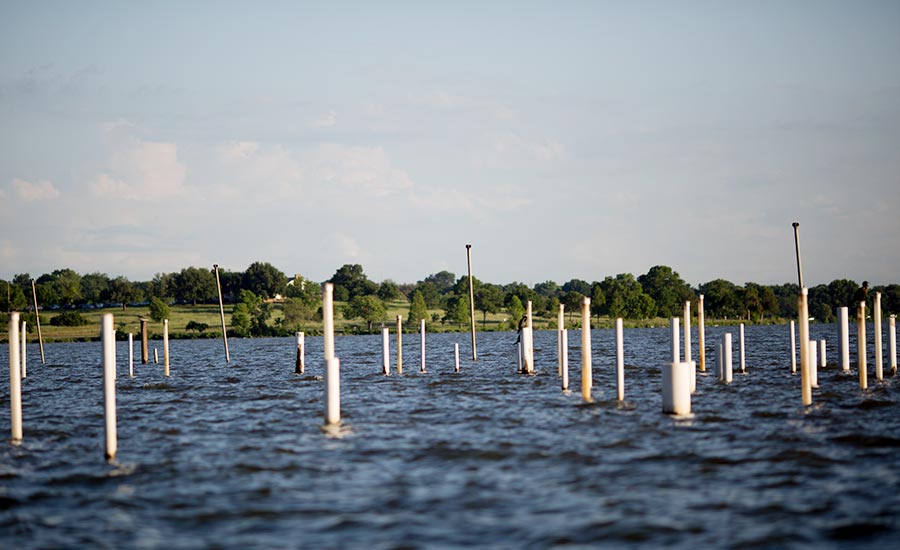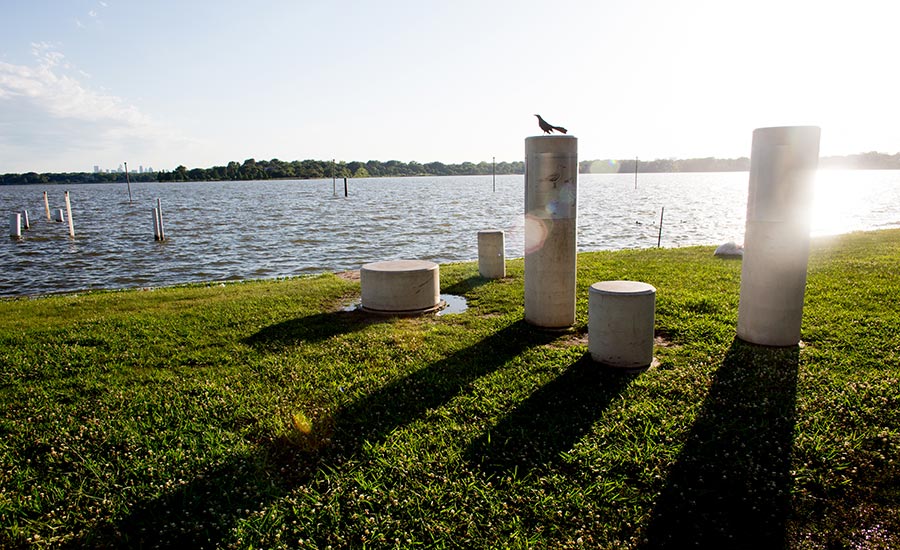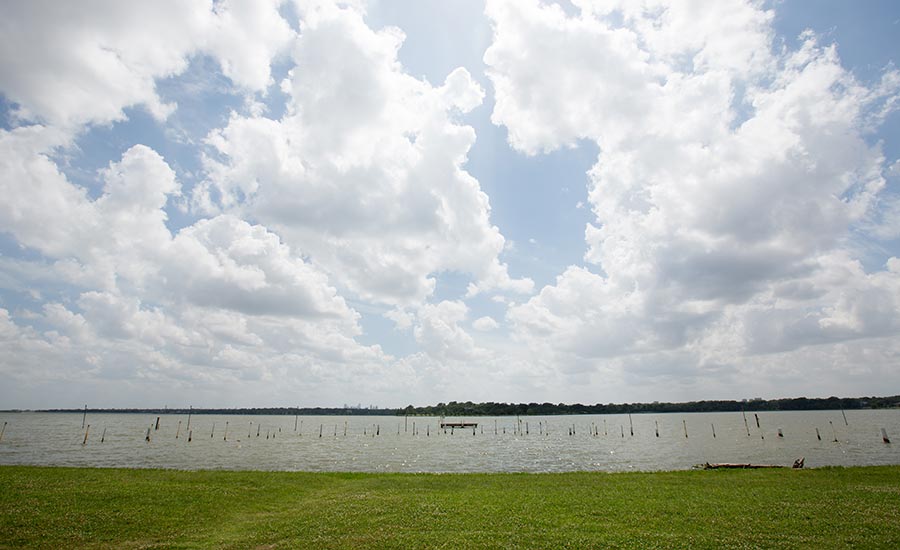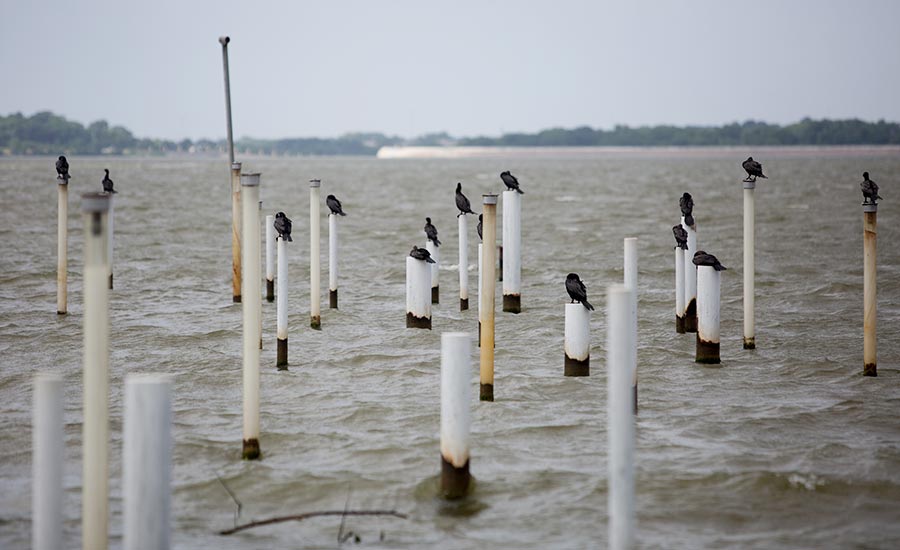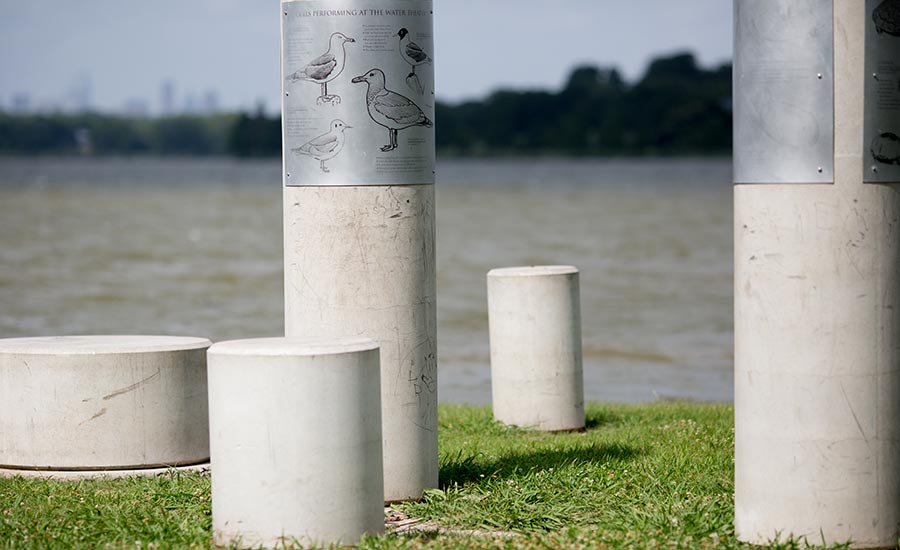“Frances Bagley and Tom Orr are two of the most respected and celebrated artists in Dallas. Their reputation is international, and they are beloved and revered figures in this community. Water Theater is among their most successful works, and it is certainly among the most successful and admired works of public art in Dallas. It has been, and continues to be, enjoyed by thousands of visitors to White Rock Lake, where it provides both aesthetic delight and a marvelous opportunity for education about our natural world.”
History
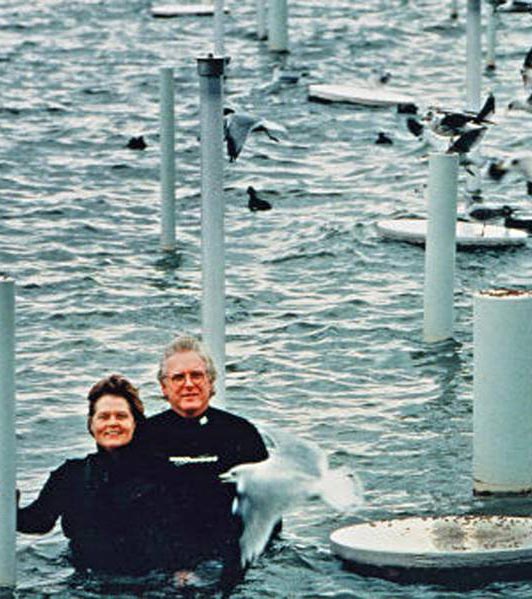
Frances Bagley and Tom Orr, photo © Nan Coulter
Dallas, Texas-based sculptors Tom Orr and Frances Bagley, who are husband and wife, first met in the 1980s and since then have solidified their reputation, both individually, and as a team, collaborating on numerous public art projects and gallery exhibitions. Their diverse commissions include works produced for the City’s rapid transit system, Dallas’ Love Field, and the Dallas Opera’s 50th anniversary production of Verdi’s Nabucco, for which they designed the sets and costumes. The latter led to a commission from the Dallas Museum of Art for the institution’s 2009 exhibition, Performance/Art. One of their best known and most beloved works is the White Rock Lake Wildlife Water Theater, installed within northeast Dallas’ White Rock Lake and along its adjacent shoreline, which opened in November 2001.
Bagley and Orr conceptualized the Water Theater, which is sited directly in front of the Art Deco Bath House Cultural Center, as habitat for native wildlife where visitors could observe and learn about the behavior of indigenous birds, fish, and turtles. Inspired by the organic shapes of cattails and lily pads, the work was designed to include 43 round steel poles that serve as perches for birds, fifteen floating fiberglass disks where turtles could sun themselves, and twenty polycarbonate solar-powered light poles, which originally illuminated the site at night. Collectively, the poles create an arc that extends from the shore out into the water and back. Along the shoreline ten cast-stone posts continue the theater on dry land, and interpretive signage provides images and descriptions of the native fauna.
The lake in which the work is sited was created in the early 1900s when White Rock Creek was dammed, and sits within a 1000+-acre park. It quickly became a popular recreation spot, and in 1929, was officially made a city park. Early improvements to the park’s infrastructure were the result of Works Progress Administration-era projects implemented by the Civilian Conservation Corps. Later, in 1939, the landscape architecture and planning firm of Hare & Hare consulted on the design. Like many larger city parks, White Rock Lake Park saw a gradual decline in its condition and use after World War II. In the late 1980s City and volunteer initiatives began the process of restoring and rehabilitating the park which in recent years has once again become a beloved destination for Dallas residents. Orr and Bagley’s creation was funded through the City’s Percent for Art program.
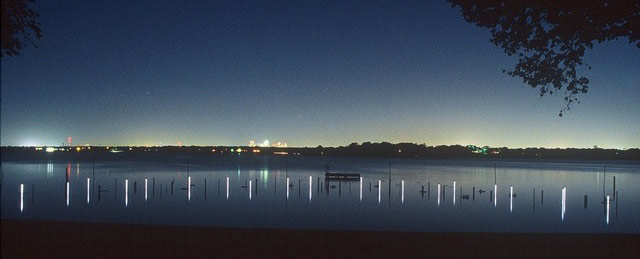
White Rock Lake Wildlife Water Theater at night, photo by Harrison Evans, courtesy the artists
THREAT
In 2009 the City of Dallas cut out its maintenance funding for public art, a situation made worse because the Percent for Art program was not structured to include a maintenance budget. Of the City’s cuts and Percent for Art program’s drawbacks, D Magazine Arts Critic Peter Simek wrote in March 2014 that Bagley says a decision to deaccession the Water Theater will create a bad precedent. “Why go through the arduous and expensive process of commissioning art if there is no way of maintaining that art?” He went on to characterize the work at White Rock as “one of the few thoughtful pieces of public art the City of Dallas has commissioned.”[1] Jed Morse, the Nasher Sculpture Center’s Chief Curator calls it “an important work of art in the City of Dallas.”[2]
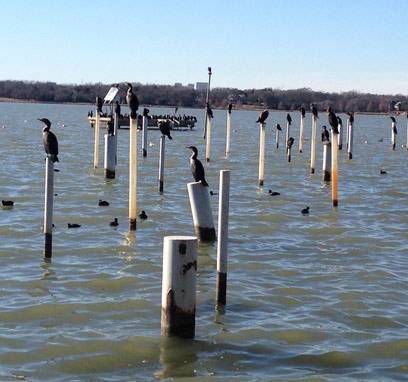
Photo courtesy the artists
In recent years the lack of proper maintenance has become evident. All of the poles are rusting, several are listing and the solar-powered light poles no longer function. In addition, the floating disks were destroyed during a storm shortly after the project’s completion and the onshore interpretive panels have been vandalized to the point of illegibility.
A support group called The Friends of the Bath House Cultural Center investigated taking on the repair of the Theater, but it proved too costly. On January 7, 2014, the Office of Cultural Affairs also determined that funds were unavailable. Subsequently, the Public Art Committee recommended the work be deaccessioned and removed – in effect destroyed. The ensuing public outcry and media coverage led the Office of Cultural Affairs and the Cultural Affairs Commission to take a second look, and restore partial funding. A determination about the site’s future may be made on February 19, 2015, when an engineer’s report is available for review.
1 Peter Simek, “Dallas Will Commission Public Art, But Don’t Ask Them to Actually Maintain It,” D Magazine, March 20, 2014 (accessed August 25, 2014).
2 Shari Goldstein Stern, “WHITE ROCK Wildlife Theater controversy continues to brew,” White Rock Lake Weekly (accessed August 25, 2014).

